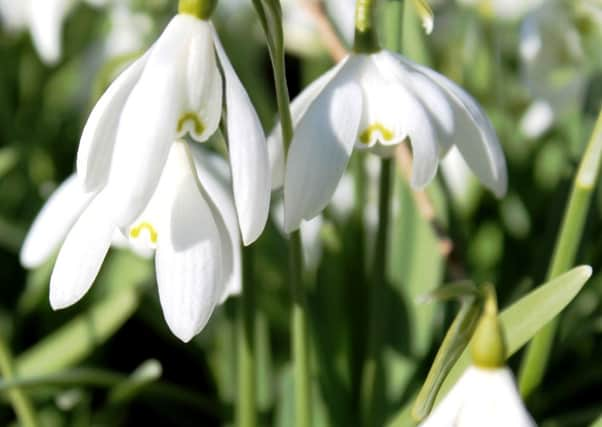Thoughts of glory


Unfortunately, winter is still gearing up and we have the potential of weeks and weeks of poor weather to come. So, we have to make the most of what we’ve got – and what we’ve got big style is the humble snowdrop, which paves the way for the more colourful and larger spring bulbs like daffodils and tulips. It may be smaller and less vibrant but it is much-loved and recognised by one and all.
But unlike its bigger spring brethren, it is forgotten as soon as its flowering days are over.
Advertisement
Hide AdAdvertisement
Hide AdWhereas tall flowers leave behind the problem of tatty foliage, the snowdrop (Galanthus) becomes inconspicuous after the last flower fades, and is so often tucked away in corners and beneath shrubs and trees, that it becomes an instant, distant memory.
The thoughtful gardener will, however, never forget anything which can put on a brave face when winter is doing her worst. And in a few weeks, that same thoughtful gardener may well be preparing to plant even more snowdrops.
Strange though it may seem, clumps of Galanthus bulbs, lifted and planted immediately after they have finished flowering, will fare far better than the wrinkled, dry bulbs which are offered for sale in autumn.
Those sad apologies for a splendid spring flower take time to acclimatise, whereas bulbs planted in March – “in the green”, which is a way of saying they have finished blooming but are still heavy with foliage – will carry on as though nothing has disturbed their world.
Advertisement
Hide AdAdvertisement
Hide AdFor that reason, many gardeners watch until the final flower has bloomed, then they dash out, lift and divide clumps, and replant them. It’s a cheap, easy way of propagating the species and ensuring an increased display of flowers next year.
Snowdrops like shade; under trees, in grass, but they can grow and thrive where the soil is fertile and free-draining.
Like all bulbs, they are self-contained cannibals, feeding on the goodness from their own foliage.
So, after flowering, they should be left alone until the leaves have yellowed. Cut them down early and the quality and quantity of next year’s show will be diminished.